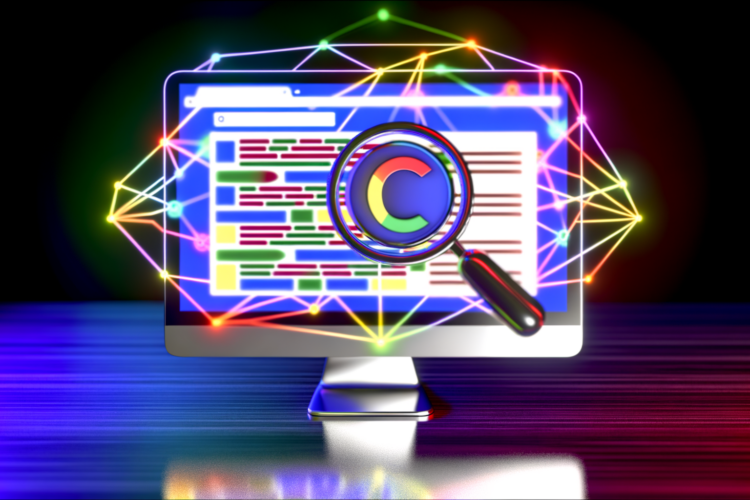
Optimizing a digital art portfolio for search engines involves a mix of on-page, off-page, and technical SEO techniques. On the surface, you must ensure your images are discoverable by search engines, use keywords effectively in your text, and have a user-friendly site structure. Delving deeper, you’ll also want to build a robust backlink profile, improve site speed, and leverage social media to enhance your online presence.
The Essence of SEO for a Digital Art Portfolio
Search engine optimization (SEO) for a digital art portfolio is about making your artwork more visible to the audience searching for it online. Applying strategic SEO techniques can help your website rank higher in search engine results, attract more visitors, and potentially increase your client base and art sales.
Understanding Your Audience
Before diving into specific techniques, it’s imperative to understand your target audience. Conduct keyword research to discover the terms and phrases potential clients use when searching for art like yours. Tools like Google Keyword Planner or SEMrush can be invaluable for this. Catering your content to these keywords increases the relevance of your portfolio to user searches.
Image Optimization
Art portfolio websites are visually driven, which means the images of your artwork take center stage. To ensure these images are both findable and load quickly, follow these practices:
- Compress Images: Use tools like Adobe Photoshop or free online services to compress your images without compromising quality, ensuring faster load times.
- Descriptive File Names: Name your images descriptively and include target keywords. For example, “modern-abstract-acrylic-painting.jpg” rather than “IMG_0001.jpg.”
- ALT Tags: Use alt tags to describe your images. This not only helps visually impaired users but also allows search engines to better understand the images on your site.
- Image Sitemaps: Include an image sitemap to help search engines find all of your images.
On-Page Optimization
On-page optimization is about the content and HTML source code of a page. Make sure each page of your portfolio has a unique title tag and meta description incorporating your keywords. Include keywords naturally in your headlines and throughout your page content.
Create detailed descriptions for each piece of artwork, highlighting your creative process or the story behind the piece. This enhances the user experience and provides more content for search engines to index.
User Experience (UX)
Search engines favor websites that provide a quality user experience. A clean design, intuitive navigation, and mobile responsiveness are all critical factors in keeping visitors engaged. A responsive website ensures that your digital art portfolio displays correctly and is easy to use on all devices, including smartphones and tablets.
Site Structure and URL Optimization
A logical site structure makes it easier for search engines to crawl your website and understand its content. Use a clear URL structure with readable slugs that reflect the content of the page. For example, use “www.yourartwebsite.com/gallery/landscapes” instead of “www.yourartwebsite.com/gallery?category=4.”
Technical SEO
Technical SEO covers the non-content aspects of your website that help search engines crawl and index your site effectively. This includes aspects like site speed, mobile-friendliness, and secure connections (HTTPS). Use tools like Google’s PageSpeed Insights to identify and fix any speed issues.
Content Marketing and Blogging
A blog can attract more traffic to your site and provide fresh content for search engines to index. Share stories about your creative process, art techniques, or industry insights. Use your blog to target additional keywords that may be relevant to your audience.
Social Media and Online Communities
While not a direct ranking factor for SEO, social media can significantly impact your portfolio’s visibility. Share your artwork on platforms like Instagram, Pinterest, and Behance where potential clients might discover your work. Engage with art communities and participate in discussions.
Building Backlinks
Backlinks, or links from other websites to yours, are essential for SEO. They signal to search engines that your site is a credible source of information. Reach out to art blogs, online magazines, and galleries to see if they would feature your work or interview you.
Local SEO
If you sell your art locally or participate in local shows, make sure to optimize for local SEO. This includes creating a Google My Business listing and getting listed in local directories.
Advanced SEO Techniques
For those looking to take their SEO efforts further:
Structured Data Markup
Structured data markup, also known as schema markup, can be added to your HTML to provide search engines with more information about your content. For an art portfolio, this may include marking up your artwork images as “ImageObject” and including attributes like “name,” “author,” and “description.”
Progressive Web Apps (PWAs)
Consider turning your portfolio into a PWA. This technology allows for a more app-like experience on mobile devices and can significantly improve speed and user engagement.
Content Diversification
Don’t limit your content to just images and text; consider adding videos, podcasts, or interactive tours of your studio. This enriches the user experience and can help you stand out in search results.
International SEO
If you’re targeting a global audience, ensure that your website is optimized for international SEO. This may include using hreflang tags for language and regional URLs, as well as localizing content where appropriate.
Finishing Thoughts
Optimizing a digital art portfolio for SEO is a multi-faceted process that touches many aspects of your website, from the technical to the content-driven. Staying on top of SEO best practices and continually refining your strategy will help ensure that your portfolio ranks well in search engine results and reaches the audience who is most likely to appreciate and invest in your artwork. Remember to monitor your analytics, keep an eye on your site’s performance, and always be ready to adapt to the ever-evolving landscape of SEO. With dedication and a keen attention to detail, you can craft an SEO strategy that helps your digital art portfolio shine online.
Frequently Asked Questions
What is SEO and why is it important for a digital art portfolio?
SEO stands for Search Engine Optimization. It involves optimizing your website so that it ranks higher in search engine results, making it more visible to those who are looking for the content you offer. For a digital art portfolio, this is crucial as it helps to attract potential clients, gallery owners, and art enthusiasts to your work.
What are some key SEO techniques to optimize a digital art portfolio?
The key SEO techniques for optimizing a digital art portfolio include keyword research to identify terms that potential visitors may use, creating high-quality content that showcases your art, optimizing your website’s title tags and meta descriptions, utilizing alt text for images, maintaining a mobile-friendly website design, and building high-quality backlinks from reputable sites.
How can keywords be effectively used in a digital art portfolio for SEO?
Keywords can be effectively used in a digital art portfolio by incorporating them into the website’s content, such as the descriptions of art pieces, blog posts, and artist statements. It’s important to use relevant and specific keywords that accurately describe your art and resonate with your target audience. However, avoid keyword stuffing as it can harm your SEO performance.
Is blogging beneficial for SEO in a digital art portfolio?
Yes, blogging is very beneficial for SEO in a digital art portfolio. Regularly creating blog content can help you target a wider range of keywords, keep your website updated with fresh content (which search engines love), and provide value to your audience, which can increase engagement and shareability.
Why is image optimization important for a digital art portfolio’s SEO?
Image optimization is crucial for a digital art portfolio’s SEO because it helps search engines understand and index your artwork properly. This involves using descriptive file names, reducing file sizes for faster loading, and including alt text to describe the image content for search engine crawlers and people with visual impairments.
Does mobile responsiveness affect SEO for digital art portfolios?
Mobile responsiveness greatly affects SEO for digital art portfolios. Search engines like Google prioritize mobile-friendly websites in their rankings because a growing number of users access the internet via mobile devices. Therefore, having a website that looks good and operates well on smartphones and tablets is essential for both user experience and search engine ranking.
How can social media be used to complement a digital art portfolio’s SEO?
Social media can complement a digital art portfolio’s SEO by increasing the portfolio’s visibility and drawing traffic to the website. Sharing your art and website content on social media platforms can also encourage engagement and generate backlinks when others share your content, which can further boost SEO.
Should an artist invest time in learning SEO or hire an expert for their digital art portfolio?
The decision to invest time in learning SEO or hiring an expert depends on the artist’s current situation and goals. If an artist has the time and interest in learning SEO, it can be a valuable skill that benefits their digital presence long-term. However, if they prefer to focus on their art and have the resources, hiring an expert can save time and potentially yield quicker and more professional results.






